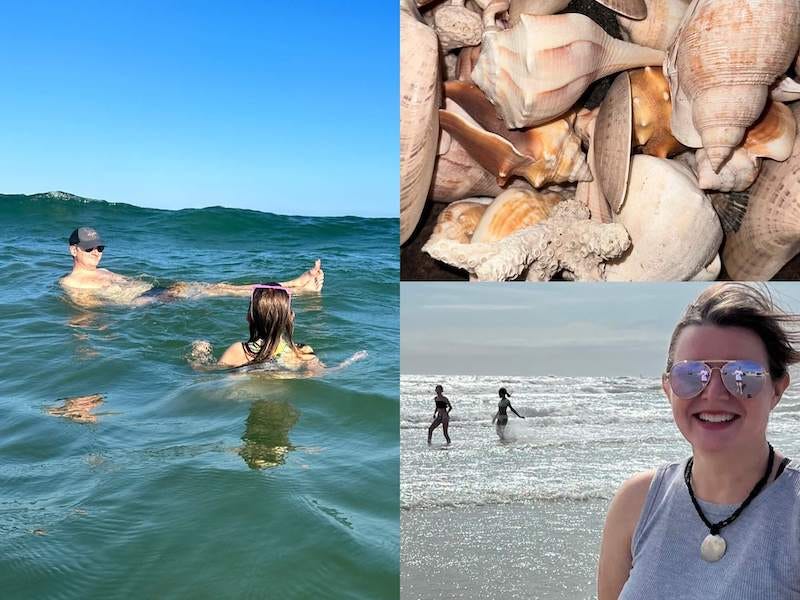'Happiness is not something you experience, it's something you remember'
A middle school essay prompt forces me to think deeply about one of my weird hobbies. Plus, tips for making more happy memories.
Our daughter starts middle school next year, and so we’re exploring “magnet programs” that might be a good fit. It’s daunting—how does a kid decide whether she’s more into the humanities or STEM programming?
Applying to get into a magnet school here in Austin requires writing an essay in one hour, under supervision. It feels like a heavy responsibility for someone who would rather memorize Taylor Swift lyrics than undertake writing an essay. Did I mention she’s 10?
Anyway, to better understand the essay assignment, I looked up the school’s examples of past prompts. This one was my favorite:
Oscar Levant, a pianist and movie actor, said, “Happiness is not something you experience, it’s something you remember.” Describe an event that you are happy to remember. Provide specific examples and details to support why this event was a special memory.
Nice, right? It’d be fun to read those essays.
Oscar’s quote came to mind while I was recently hunting for seashells on Padre Island. I’m kind of a maniac when it comes to shell collecting, but I had never given my hobby much thought. As I dumped the newly collected shells onto paper towels and sorted them by species and size, I kept wondering: Why do I love seashells? What is the point? Yes, they’re pretty, but it’s deeper than that….right?
And then the quote popped into my head, happiness is something you remember. Ah, that’s it! My ever-growing seashell collection is important to me because they help ensure my happy memories outweigh the bad.
Our brains cling to negative memories
Actively remembering happy times is important for mental health. Research shows negative experiences convert more into long-term memories, lingering forever.1 Our brains evolved this way to protect us from harm, but bad memories easily pile up and contribute to PTSD and depression.
I learned this firsthand during one of the hardest times in my life, right after my close loved one attempted suicide for the second time in as many years. Plunged into a Groundhog Day of bleakness and a repeat of traumatic memories, I was lucky enough to have a husband who saw the importance of getting me out of our dark, cold Queens apartment and driving 1,233 miles to sunny, warm Little Gasparilla Island, Florida.
I had never been to Florida’s Gulf Coast before, and I was awestruck by the abundant wildlife. We saw manatees, indigo snakes, alligators, gopher tortoises, and dolphins. But it was the seashells—so many large, beautiful seashells—that made me feel like I had entered a tropical dreamworld where pain and suffering didn’t exist.
A decade-plus later, those shells—Florida fighting conchs, moon snails, banded tulips, tube worms, venus sunray clams, angel wings, sand dollars, and so many more—rest in a bowl on my coffee table in my living room, at the center of our house in Texas. In the years since, my collection of shells from other beaches has grown beyond the bowl, taking over window sills, walls, and framed shadow boxes. I now have so many I use them in my container plants, protecting the soil from rapid dehydration.
To an outsider, they don’t look so special. Just some seashells, perhaps bought at a souvenir shop or discovered bagged up at a garage sale. But no, they were all found the old-fashioned way, scanning various beaches for hours, eyes glued to the tide line. They are not trinkets but treasures—my hard, calcified proof that life can be as wondrous as it is woeful.
(Did I pass the essay test?)
How to make the good times last (in your brain)
It’s actually within our power to become “memory architects,” notes Meik Wiking, author of The Art of Making Memories.
For a pleasant experience to convert into long-term memory, there are certain things that help. As discussed in depth in Wiking’s book (and distilled nicely in this article by Nina Gruenewald), people tend to remember things that:
are new and extraordinary (which is why the teen/college years feel so memorable — so many new things!)
are multisensory
require attention in the moment
involve connection with others
engage the emotions
provide a sense of achievement
And those memories can be purposefully encoded to last longer by:
talking about them later (storytelling)
collecting mementos and memorabilia (←like seashells!)
Don’t sweat the seasonal shenanigans
Funnily enough, we’re entering the “holiday season,” when people (usually moms) go to great lengths to decorate, cook an entire large bird, put that creepy Elf out on a shelf, shop for everyone but themselves, and otherwise drive themselves into a frenzy to make happy memories. Idunnoaboutyou, but when I asked my kiddo for her favorite memories, the holidays weren’t mentioned. What a relief!
Instead, she brought up our summer trip to British Columbia (where I found the most stunning oyster shells, btw…) and a visit to Kalahari Water Park. However, she did ask if we could go to the Nutcracker and the Trail of Lights this year, so I guess I’m not totally off the hook.
Anyway, happy T-giving my American friends — hope it’s a relaxing one!
The Shrieking Cactus will return Nov. 29.
https://www.verywellmind.com/why-stressful-memories-stick-out-in-our-minds-5207496


